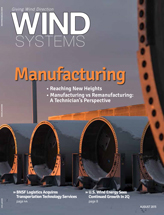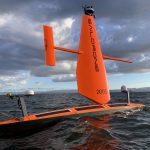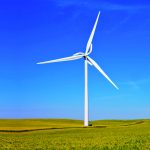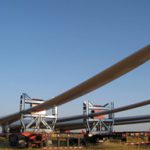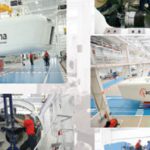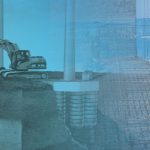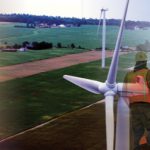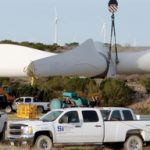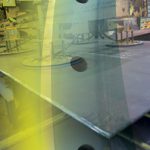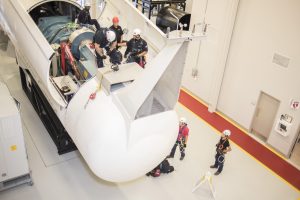Wind energy is a natural breeding ground for high-tech startups seeking to lend their technological expertise to an industry continually seeking to optimize operations to lower costs. In an industry this young, the long-term pioneers are becoming increasingly difficult to find.
Bucking that trend is Avanti Wind Systems, which for more than 30 years has been serving the global wind energy industry by providing its broad portfolio of wind turbine ascent products, tower internals, fall protection, and personal protective equipment, as well as inspection, certification, and training services.
The company has embraced technology and innovation in the development of its products and services throughout those three decades, but is determined not to do at the expense of its primary, underscoring mission: Safe Work in Wind Turbines.
 That’s not to say that Avanti wasn’t a startup itself. It was … 130 years ago. The company was founded in 1885 in Copenhagen, Denmark, as a producer of wooden ladders. While the company still produces ladders today, its evolution and entry into the wind energy industry began in the 1980s as a supplier of aluminum ladders.
That’s not to say that Avanti wasn’t a startup itself. It was … 130 years ago. The company was founded in 1885 in Copenhagen, Denmark, as a producer of wooden ladders. While the company still produces ladders today, its evolution and entry into the wind energy industry began in the 1980s as a supplier of aluminum ladders.
Expanding its wind energy industry portfolio, the company has since introduced its lines of fall protection systems, service lifts, and climb assist products.
SERVICE LIFTS & CLIMB ASSIST
Avanti offers several different service lift solutions based on technologies that are commonly preferred in the wind industry. Those include a wire-guided system, a ladder-guided system, and a rack-and-pinion system. The trio of offerings allow for choice of configurations to meet customer needs.
“Depending on the layout inside of the tower, there may be one system that is preferred over another system,” said Kent Pedersen, general manager for Avanti Wind Systems. “So we offer the three most commonly used technologies in the wind industry.”
According to the company, service lifts are generally accepted as the safest method for technicians to ascend and descend a wind tower. Using service lifts nearly eliminates the safety risks that technicians would face through climbing.
Additionally, service lifts also contribute to overall operational efficiency by increasing the number of ascents allowed over traditional ascent methods.
“We’re hearing from our customer base that repetitive climbing is a concern,” Pedersen said. “Another concern is tension among service technicians operating in a safe work environment where you’re not putting your body through strenuous situations, either during very cold weather or during very warm weather.”
Some sites only allow a certain number of daily climbs into the tower for each technician, depending on the tower height and other factors, Pedersen said.
“With a service lift there really is no limitation to how many towers you can enter each day,” Pedersen said. “thereby providing a safe work environment as well as an efficient work environment with a focus of keeping the uptime or the availability as high as possible.”
Avanti also offers a climb assist system, which works in conjunction with traditional climbing methods. This system utilizes a rope on an endless loop stretching the length of the ladder and controlled by a motor. As the technician starts to climb, a control box senses and adjusts to the user’s climbing speed.
TOWER INTERNALS
Beyond tower ascent, the company is also heavily involved in supplying wind turbine owners with necessary components used on the interior of wind turbine towers. As a means of ‘one-stop shopping,’ these components are increasingly being supplied as master tower internals kit sets containing components from ladders and fabricator platforms all the way down to zip ties and decals, and often include up to 2,000 line items. In recent years, Avanti has established factories in both the U.S. and China in order to produce its wind turbine tower internals. The company has sold more than 500 of its tower internals kit sets to date in the U.S. alone.
INSPECTION & CERTIFICATION
Drawing on the company’s longstanding expertise in the design, manufacture, and implementation of service lifts, ladders, and  other safety equipment, Avanti’s safety services and inspection division offers turnkey installation, inspection, and certification of wind turbine tower safety components and systems.
other safety equipment, Avanti’s safety services and inspection division offers turnkey installation, inspection, and certification of wind turbine tower safety components and systems.
These services help ensure that a wind farm owner’s tower safety systems and components are properly installed and maintained primarily for personnel safety, and also in accordance with jurisdictional regulations.
Avanti recently introduced an inspection and certification program aimed at wind farm operators that provides a simple, comprehensive program for tower maintenance and regulation compliance. Known as Avanti ONE, the program carries the ‘one-stop shop’ philosophy of its tower internals kit sets over to tower inspection and maintenance.
The goal of the program, which according to the company “includes inspection, maintenance/repair, and certification of up to 18 different safety components typically found in a wind tower,” is to maximize turbine availability by performing a comprehensive set of inspection, certification, and maintenance functions at once, thus reducing turbine downtime required by visits from multiple contractors.
“Avanti ONE is similar to our tower internals kits in that it’s a one-stop shop program.” Pedersen said. “It’s an all-encompassing safety inspection and certification that would only interrupt the turbine one time when we walk in there and hereby saving the customers both mobilization of multiple contractors as well as additional uptime for their turbine.”
Among the components or functions covered in the Avanti ONE program are: service lift and guard rail compliance, tower stairs, ladders, fall arrest, anchor points, fire extinguishers, emergency lighting, rescue kits, first aid stations, cabling, grounding systems, edge protection, door filters, and chain hoists.
In contracting with wind farm operators for these services, the company can schedule Avanti ONE during a season of low wind to further reduce adverse effects on production yield. Additionally, many owners may choose to schedule Avanti ONE services prior to their turbines’ end-of-warranty period to ensure safe operations prior to taking over service from the OEM.
TRAINING & E-LEARNING
Avanti’s commitment to safety goes beyond providing the equipment used to create a safe work environment. The company also provides safety training to ensure that a wind farm owner’s employees or contractors have the knowledge and ability to safely operate Avanti’s product line. Additionally, the company offers courses on health and safety, first aid, fall protection, rescue and evacuation, and fire precautions.
“We have trainers on staff,” Pedersen said. “They go out and provide training, not just in North America, but all over the world. We offer different types of training programs in addition to how to install, operate, troubleshoot and evacuate Avanti’s own products.”
A recent addition to Avanti’s training portfolio is a unique platform called Avanti E-Learning. Developed and offered in conjunction with Virtual Lab, the program allows participants to take training courses from anywhere in the world, avoiding excess travel and associated costs.
The E-Learning program combines online instruction with a realistic, 3-D Personal Computer Simulation that uses interactive gaming technology to provide a hands-on learning experience without actually being at a turbine site.
“The E-Learning is a way for our customers and users to obtain necessary training,” Pedersen said. “Instead of going out on site to a wind farm where they have to pay mobilization, demobilization, and interrupt the turbines’ availability, the site can now instruct technicians to ensure that they have all this training taken care of before they show up at the site.”
Trainees can take advantage of the E-learning platform wherever they have access to a desktop or laptop computer — from their home, office, or even a hotel room. All the user has to do is log in to the system, pay the course fee, and begin the training. E-Learning courses closely mirror the training that the student would receive through site-based training courses.
“The difference is that the online training is what we call ‘consequence training,’ “ Pedersen said. “As the user is taking a test, any mistakes that are made carry consequences. For example, if you don’t attach to your fall protection system, then you end up falling off the ladder, which could happen in real life.”
In the event that a trainee fails one of the tests on the E-Learning platform, he is presented with a different set of questions upon re-taking the test. This safeguards against memorization and preserves the integrity of the learning experience, considering the critical nature of personal safety.
Advances in wind turbine technology, most notably increasing tower heights, are paving the way for the wind energy industry to expand into geographical regions that were once not even considered. Avanti Wind Systems is poised to parallel the evolution of the industry as it has for the past three decades — carrying out its mission of Safe Work in Wind Towers up every step along the way.



















